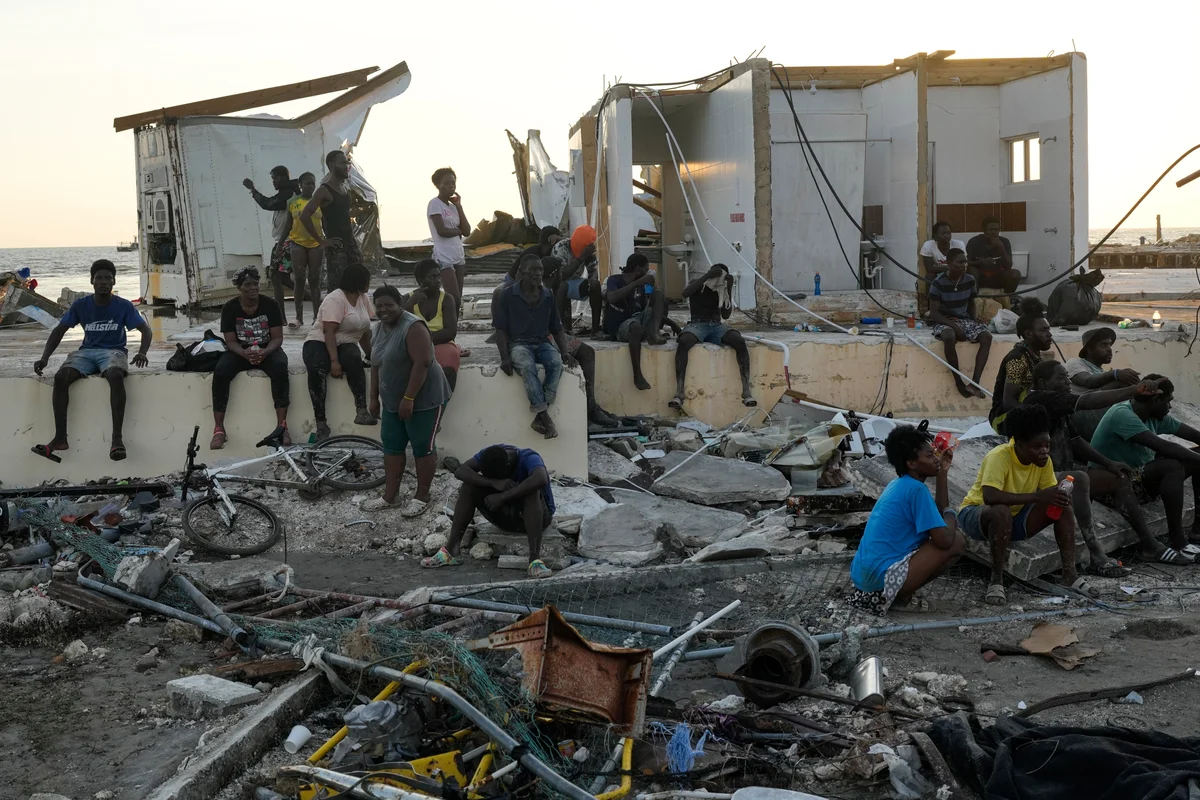Copyright independent

As Hurricane Melissa ripped through Jamaica, Rohan Marley received a call from a close friend living in Black River on the southwest coast of the island. “He was showing me the winds that were coming and he was like, ‘Wow, I’ve never seen anything like this,’” he tells The Independent from his home in Miami. Mr Marley, who is the son of iconic musician Bob Marley, immediately began to worry. Within hours, the storm had reduced the sleepy town of Black River to rubble. “It’s the aftermath you worry about, because of the lack of light, [and] accessibility to water, food and normal resources that people don’t have on a daily basis,” he said. Hurricane Melissa became the strongest storm to ever hit Jamaica when it made landfall on 28 October. As a category 5 hurricane, it surpassed the power of Hurricane Gilbert in 1988, which itself caused widespread damage. Residents were forced to seek shelter as gales of 185mph tore through the western side of the Caribbean island. The United Nations Office for the Coordination of Humanitarian Affairs (OCHA) estimates that every building in Black River in St Elizabeth, the largest parish in Jamaica, had been destroyed. At least 32 people died in Jamaica as a result of the storm and another 43 fatalities were reported in nearby Haiti, where 13 others remain missing. The hurricane has caused unprecedented damage to Jamaica’s economy. On Tuesday, prime minister Andrew Holness said that damage to homes and key infrastructure was roughly equivalent to 28 to 32 per cent of the country’s gross domestic product last year. This represented a loss of between $6bn to $7bn, which Mr Holness said was a conservative estimate. Short-term economic output could decline by 8 to 13 per cent. A full picture of the money required to rebuild Jamaica is yet to emerge, but the International Federation of Red Cross (IFRC) has set an emergency appeal goal of £17.9m to reach 180,000 people over a 24-month period. Meanwhile, the IMF has drawn up plans to deliver £608m in resources to kickstart relief, recovery and reconstruction efforts. But concerns remain that monetary aid alone will not be enough to rebuild Jamaica and make the country resilient against future threats. Questions also remain about how housing will be rebuilt. Satellite imagery shows that 80 per cent of roofs in western Jamaica have been destroyed. Dudley “Tal” Stokes, a Jamaican bobsledder who has been involved in responses to numerous disasters, including Hurricane Gilbert, says it is vital that aid goes towards helping people rebuild their homes into properties that can withstand a future hurricane. “Some of the people I know whose homes have been damaged are people of relative means, but they are devastated... So I can imagine what the majority of the impacted population must be going through, because there's a sense of hopelessness,” he tells The Independent. “These are buildings that people have put together over 30 or 40 years and they are being told to do it in the next 18 months. People can’t conceive of that.” According to a 2018 report by the Global Facility for Disaster Reduction and Recovery, many low-income households on the island build or commission their own homes through an informal housing sector. Bank mortgages and loans are not widely used. Instead, construction is a gradual process where household members work with local practitioners to build homes. Organisations such as the Bob and Rita Marley Foundation have raised more than £83,000 in five days, which will go towards helping Jamaicans rebuild their homes. They are aiming to raise a total of £190k, which will supply roofing kits including zinc, lumber, nails and screws. The IFRC mobilised around 160 tonnes of humanitarian aid within a week of the incident, including blankets, cleaning kits, hygiene kits, tarps for roofs, and shelter tool kits. Special project officer at the IMF Local Office, Bank of Jamaica, Keenan Falconer, says that the island’s infrastructure was “woefully lacking”. Drainage systems in the rural west of the country have been poorly maintained, while the hurricane snapped electricity lines and “discarded them like pieces of lego”, rendering the national grid non-functional. Meanwhile, “shabbily built” roads are also set to cause problems in the reconstruction of the country. Despite estimated millions set to support Jamaica in the reconstruction, Mr Falconer warns: “Expected reconstruction will take years and will have to be financed by a combination of revenue generation and borrowing.” The western part of Jamaica, which was hit badly by Melissa, is known as the “breadbasket of the country”. With crops destroyed, the IFRC warned The Independent that there is a real risk of a food crisis in this time. “It will be a mammoth effort combining several organisations,” says Mariana Kuttotthara, the IFRC’s regional head of health, disaster, climate and crisis. “A lot of agriculture and crops have been completely destroyed and areas are flooded. “I think there’s definitely a risk of a food crisis right now because of just all the crops,” she adds. “For example, the poultry industry was really affected, so there is likely going to be an egg shortage... Again that can be managed through importing certain goods that would not normally have to be imported.” Mr Marley expressed concern about the potential for social unrest that could stem from a food crisis, quoting his father who once sang: “Them belly full, but we hungry. A hungry mob is a angry mob.” “From St Ann’s to Westmoreland, where most of the devastation has taken place, that’s where the shipping ports are,” he says. “The airports, all of the things where people [from around the world] come, that’s where they land first. When you land here, you get a big smile, a smile with warm-hearted people that have nothing. We already have nothing. All we have is love and family in Jamaica.” “The majority of our country is hand to mouth,” he adds. “We need the support. We need the help from outsiders because we have given so much to music and sports.” The Bob and Rita Marley Foundation is sending over approximately 200,000 meals ready to eat and 16,000 water jugs which they want to get to the most remote areas at the end of the island. Humanitarian organisations are aware that the strength of Hurricane Melissa is just a taste of what is to come for the Caribbean, with climate change set to bring more intense weather cycles to the region. The IFRC says one strategy they hope to employ is bringing in nature-based solutions to help “support the recovery of people’s livelihoods” in a way that is “climate resilient [and] climate smart to help mitigate future impacts”. Plans are in place to plant mangrove trees along the coastal fronts, which offer a buffer when natural hazards come to shore. “When the water comes rushing in, the mangroves will provide a buffer and stop a bit of the impact,” says Ms Kuttotthara. “What we have seen in Jamaica is communities that have been cut off due to landslides and falling bridges.”



